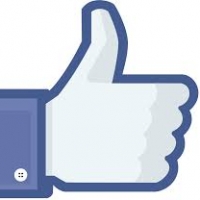Will Facebook at Work Redefine the Way We Work?

Facebook recently unveiled a pilot program for Facebook at Work. Piggy-backing on their enormous success with social networking for regular users, Facebook seems to be on a mission to redefine the way work gets done. The concept does seem appealing, but will Facebook at Work be able to replicate the success of the original Facebook?
Facebook has the benefit of having already won its users' time and attention—with 114 billion minutes of use each month in the US alone. Given the familiarity that people have with Facebook, it is logical to believe that current users will be more than willing to use it as a means to conduct work. With a certain "cool" aspect also associated with it, employers using Facebook at Work may make work even more fun for its employees.
Other the other hand, Facebook's privacy policy has always been a source of concern for its users. Though a short description of Facebook at Work provides reassurance about data usage, people will always be wary about the integrity of their data.
And as The Guardian columnist Oliver Burkeman states, "For businesses, by far the weightiest problem will concern the implications of handing over the stewardship of company data to a mega-corporation founded wholly on exploiting user data for commercial gain." Facebook may have to do a good deal of work to win over the confidence and trust of corporations.
In his book, Hooked: How to Build Habit-Forming Products, Nir Eyal details a design pattern called the “Hook Model,” which describes how products becomes habits in four steps:
- A Trigger Phase is the actuator of behavior, such as a user feeling the urge to check Twitter frequently to see what’s happening in his network.
- An Action Phase is the behavior in anticipation of a reward, such as after getting the impulse to check, the user opens Twitter.
- In the Rewards Phase, opening Twitter and seeing the tweets provides relief as the cause of impulse is met.
- In the Investment Phase, the user inputs something into the product in anticipation of a future benefit, such as the user tweets content in the anticipation of retweets.
Taking cues from the Hook model, for Facebook at Work to be successful, it will need to build in mechanisms that can make people get hooked on it. A trigger mechanism can be the need to check a message from a colleague or boss. That will prompt an action to open the application, where the user sees the message (reward) and then responds.
For this cycle to work, the entire organization will need to make crucial shifts, such as letting go of email as the primary mode of business communication, among other changes. The adoption of Facebook at Work may be more of cultural shift than just changing a tool used at work, which is always harder to achieve.

